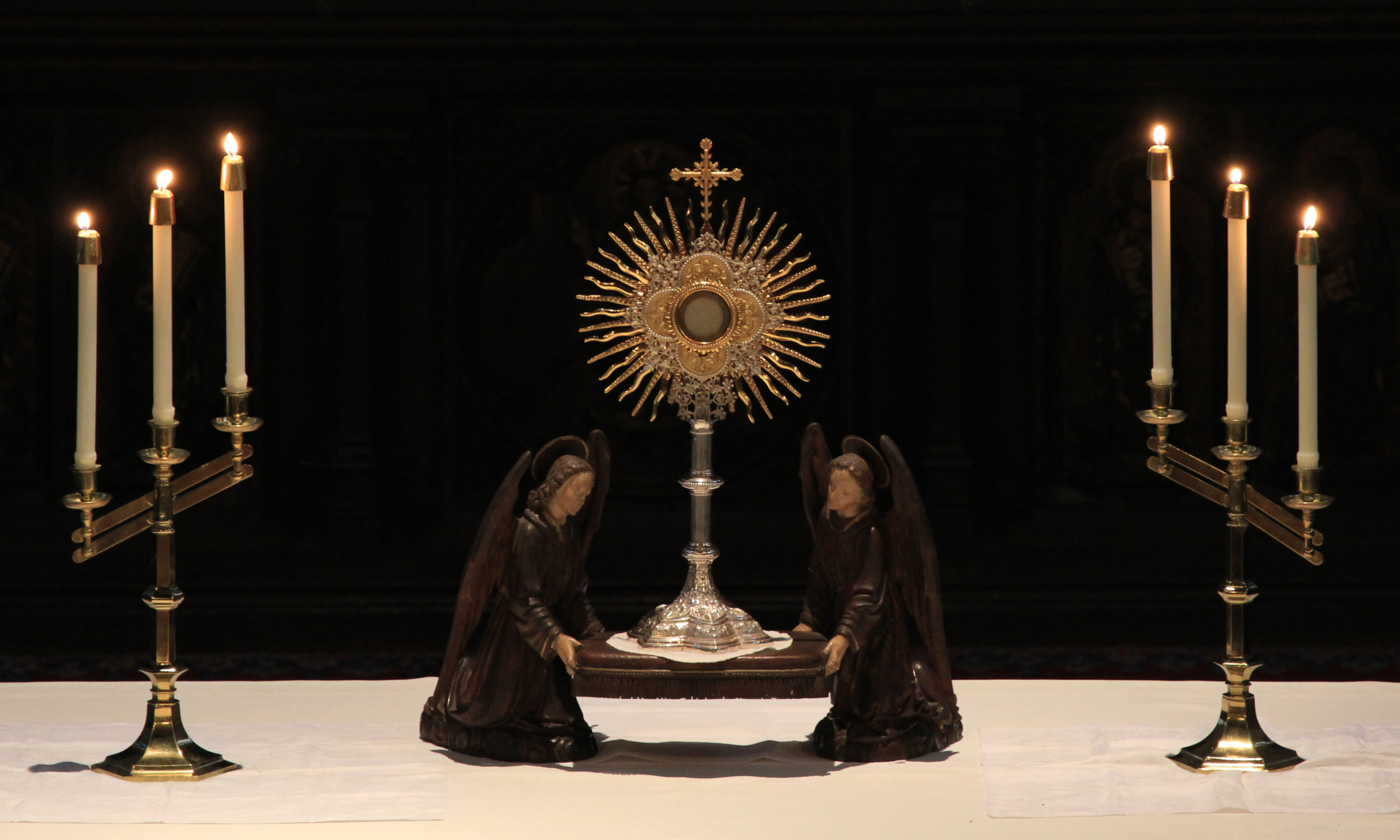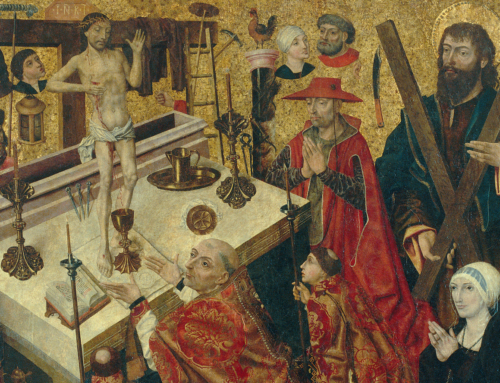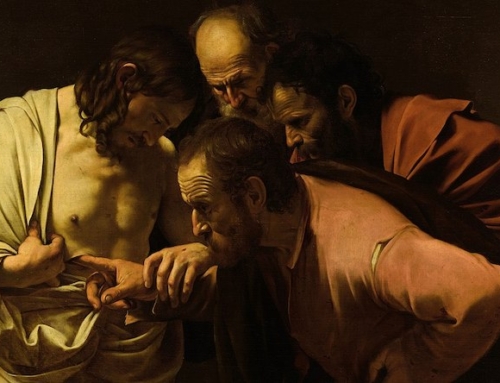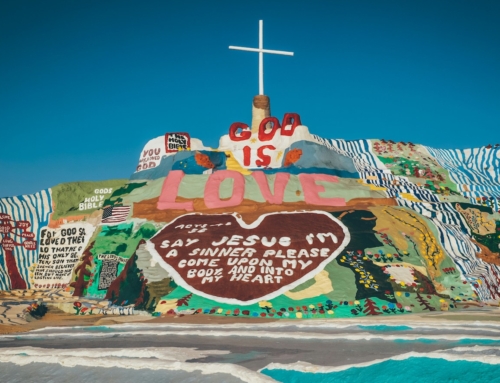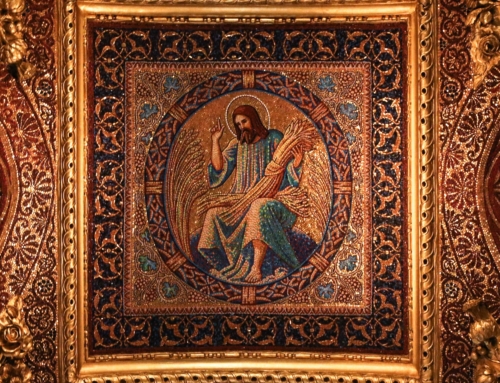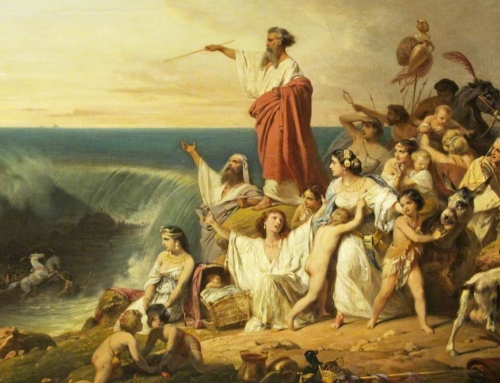When our community assembles in the chapel for adoration of the Blessed Sacrament, the stand that elevates the monstrance, called a tabor, is flanked by two angels. It’s as if they are there bearing up the Eucharistic Lord who is truly present in the sacrament.
The thought of the angels holding up and sustaining the sacred species recalls the words of the first Eucharistic prayer. At the Oblation, the priest says:
In humble prayer we ask you, almighty God: command that these gifts be borne by the hands of your holy Angel to your altar on high in the sight of your divine majesty, so that all of us, who through this participation at the altar receive the most holy Body and Blood of your Son, may be filled with every grace and heavenly blessing.
This is a profound moment in the Eucharistic prayer. The celebrant, with hands joined and body profoundly inclined, recites these words begging God to receive the gifts using imagery reminiscent of Genesis 28, where Jacob “. . . dreamed that there was a ladder set up on the earth, and the top of it reached to heaven; and behold, the angels of God were ascending and descending on it!” (Gen. 28:12).
But why, especially after the consecration, would the priest pray to have the sacramental species taken to heaven? St. Thomas explains that the priest is not actually praying for Christ’s true body to be taken to heaven (since it never ceased to be there). Rather, the priest offers this prayer “for Christ’s mystical body, which is signified in this sacrament, that the angel standing by at the Divine mysteries may present to God the prayers of both priest and people” (ST, III, q. 83, a. 4, ad 9). The “mystical body” is not only the bread and wine offered by the priest, but also “the faithful . . . with their prayers and concerns, labors and sufferings, struggles and combats” (Gihr, The Holy Sacrifice of the Mass, 661).
And let us not forget about the heavenly angel. The priest is praying that he might take our prayers to God, the petitions of the saints rising to heaven like incense (Rev. 8:3-4). Fr. Gihr writes that, since we humans, stained by original sin, are not pure of heart, the offering is fittingly presented to God by the spotless hands of his holy angel.
Much medieval ink was spilled trying to identify this angel. Hildebert of Tours (d. 1133) speculated in Versus de Mysterio Missae that the angel was the guardian angel of the priest assisting him in the divine sacrifice. St. Ambrose (d. 397) wrote in his Commentary on the Gospel According to Luke that it was the same angel who appeared to Zechariah at the altar of incense (Luke 1:8-24), St. Gabriel. We may never know for certain the identity of the angel who assists the priest at the Sacrifice of the Mass, but we can be sure that our prayers, borne to God by his holy messenger, are received at the heavenly altar.
Finally, the priest prays that by receiving the sacred elements we “may be filled with every grace and heavenly blessing.” In the elegant words of Pope St. John Paul II, the Eucharist is a renewal of sanctifying grace, a “pledge of our bodily resurrection at the end of the world” and of eternal life (Ecclesia de Eucharistia, 18)!
So the next time we adore the Eucharistic Lord, either at adoration or at Mass, let the angels take our prayers and supplications to the heavenly altar so that we too might inherit eternal life through the sacrifice of our Lord and Savior upon the cross.
✠
Image by Lawrence Lew, O.P. (used with permission).

